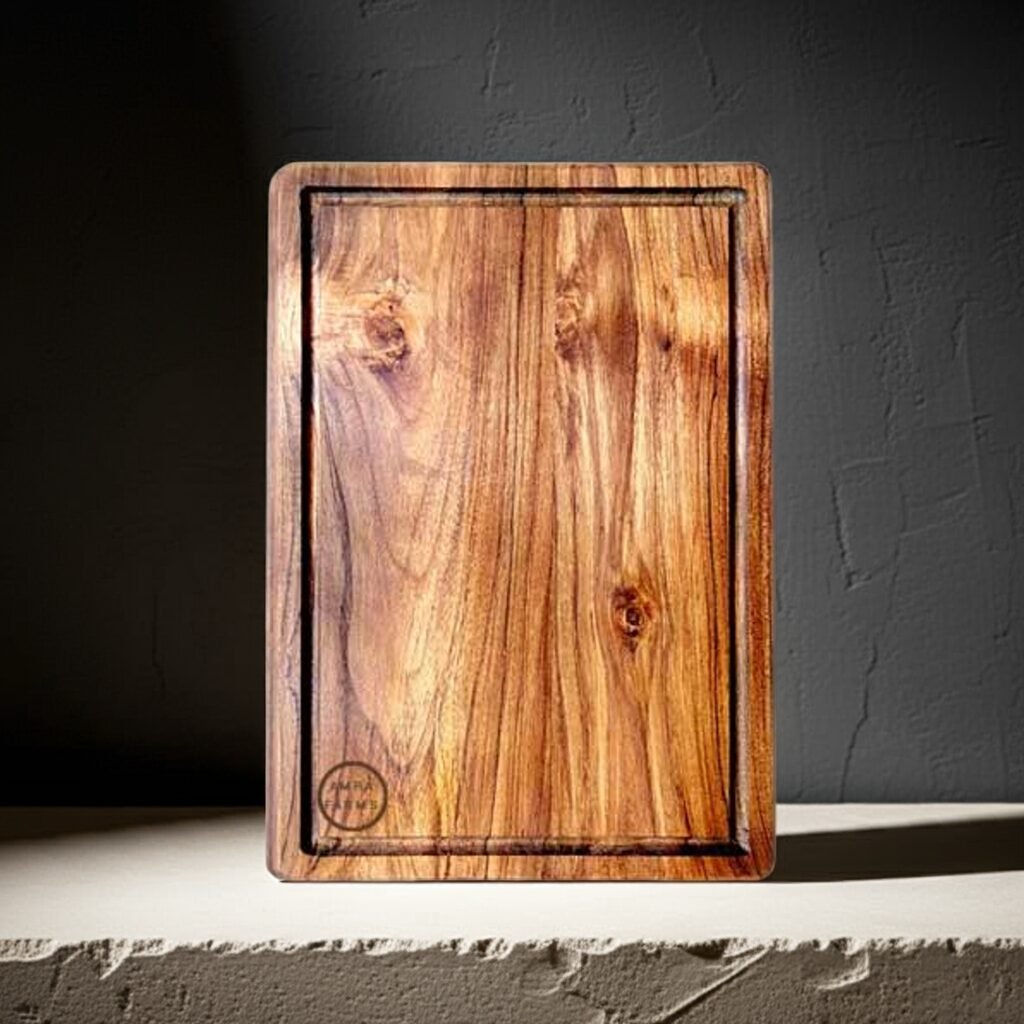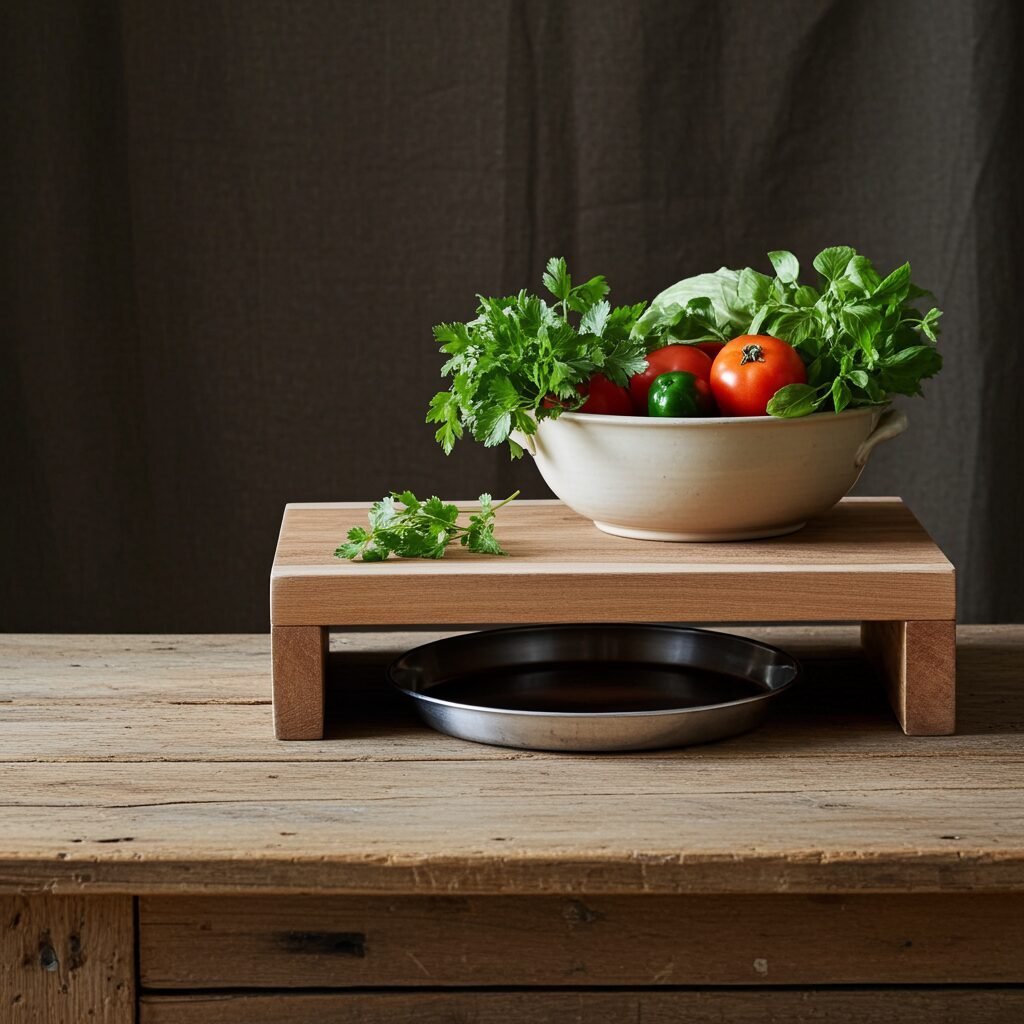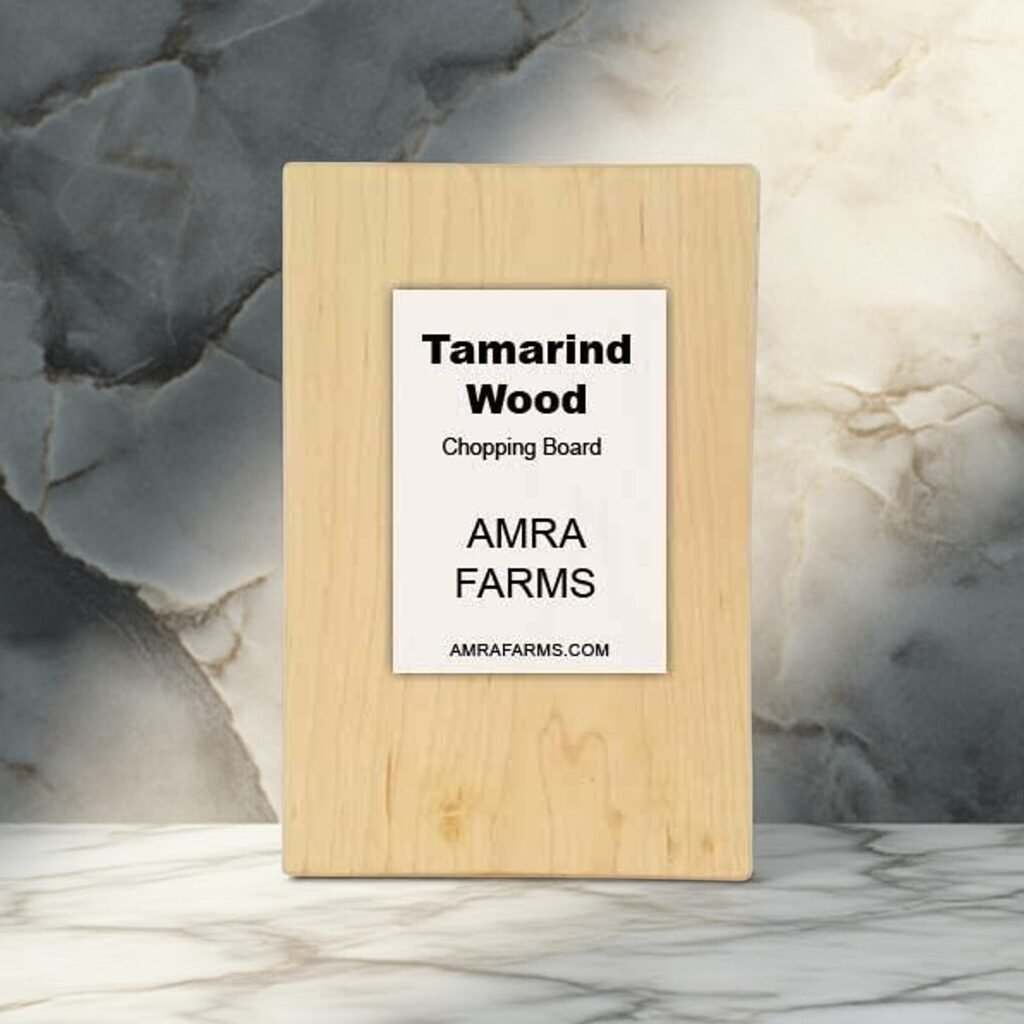Your cart is currently empty!
Why Teak Wood Vegetable Chopping Boards Are the Best Choice for Your Kitchen
One of the few kitchen accessories used daily is a chopping board. Purchasing one that is good, which will last you a long time and is functional and multipurpose, can only add value to your kitchen and home. A poor cutting board is a nuisance and an inconvenience. Poorly crafted boards that slide and dance while you are cutting vegetables are not just inconvenient but frustrating too. A good cutting board should be sturdy, strong enough to hold the ingredients in place while cutting, not spill the contents out, and be durable.
Introducing Teak wood cutting boards for vegetables. Among all the materials we chose to craft cutting boards for homes, we found teak wood the most efficient. Heavy-duty, making it literally solid strong as though built on a foundation. Literally scratch-proof, yet soft on knives and durable to last 10 years without a problem. Vegetable cutting boards, unlike meat cutting boards, are prone to scratches on the surface. Plastic cutting boards present themselves with a lot of problems when cutting vegetables. With scratches and stains on the surface, which remain stubborn in a few weeks, a plastic board becomes disgusting to look at, though you know it is clean! A teak wood cutting board, on the other hand, looks new even after months of use.






What Makes Teak Wood Ideal for Vegetable Chopping Boards?
Teak wood comes with some of the best features, just right for vegetable cutting boards. They are durable, resistant to scratches, resistant to moisture and water, antibacterial, and self-healing. Though teak is usually used for furniture and boats (yes, boats), we found teak wood a perfect material for cutting boards. Let me explain.
Natural Water-Resistant Chopping Board Properties
Did you know teak is the first choice for boat builders? Boats require wood that resists water and does not rot in it. Most wood will deteriorate, bloat, and warp when drowned in water. Teak, on the other hand, has no problem with water. This is due to its rich oil content. Teak oil, which is natural in teak wood, prevents water from entering the wood. Also, the tight grains and fibers prevent water from entering the wood.
Knife-Friendly Cutting Board—Prevents Excessive Dulling of Knives
While teak wood is tough and prevents scratches, the concern of knife dulling is imminent. It’s natural that a surface which is tough and scratch-free is prone to dull knives. Fortunately, teak wood is quite knife-friendly. But this depends on the construction of the cutting board too. If your cutting board has an end-grain design, your boards are more knife-friendly than an edge-grain cutting board. Nevertheless, teak wood is prone to making knives dull eventually but a lot slower than plastic, bamboo, glass, or steel. Verdict: Teak wood makes for a great knife-friendly cutting board.
High Durability Compared to Other Materials Like Bamboo or Plastic Cutting Boards
Teak wood is known for its superior durability compared to other materials. As a hardwood cutting board, it can withstand daily use and take cutting, slicing, and chopping without damage. Compared to plastic and bamboo boards, teak has a very forgiving surface and resists knife marks while maintaining its structural integrity for years.
Rich Natural Oils That Make It an Antibacterial Wooden Board
Teak is rich in oil content, and its thick, close fibers prevent anything from penetrating through it. This makes it one of the best materials to use as a cutting board. The natural oils in teak are known to kill all bacteria within minutes. This has been tested with Staph, E. coli, and other bacteria successfully. When compared to plastic boards, teak wood cutting boards outperformed in antibacterial features and are actually recommended by researchers.
Teak Wood vs. Other Cutting Board Materials
It’s only natural to compare teak wood to other materials. With so many options, it’s important to understand why teak wood is good and how it compares to other products. Let it be known that all materials are good at some features, though they lack others. Teak too has its flaws. Let’s compare each product side by side.
a) Teak vs. Bamboo Cutting Board
If you have ever seen the process of manufacturing bamboo boards commercially, you would understand what goes behind the production of bamboo cutting boards. They are boiled in water, cut through the center, joined with glue, flattened under pressure, and the final product is sanded to a smooth finish. The process itself involves a lot of glue, which may or may not be food-safe. Bamboo, in general, is a tough grass. It’s very hard on the knives compared to teak wood. Interestingly, bamboo is not antibacterial and is prone to mold growth if left untreated. Teak, on the other hand, is resistant to mold. Bamboo boards do require some maintenance and oiling too, but when compared to teak wood, it’s not as forgiving if you miss out on maintaining the board. The verdict? Bamboo is great as long as you maintain it well. Nevertheless, you are going to see a duller blade faster. And yes, aesthetically, teak wood beats bamboo any time.
b) Teak vs. Plastic Cutting Board
Plastic boards are excellent if they are made from HDPE. Softer plastic is prone to knife marks faster, and the possibility of microplastics in your food is high. Also, softer plastic boards are not durable. HDPE plastic boards, on the other hand, are far better, durable, and easy to clean. Plastic boards are dishwasher safe and can be easily sanitized. Most plastic boards will work great for 6 months to a year, though they will show scratches from the 3rd month onwards, which may look disgusting! The verdict? If you are looking for a durable, beautiful piece of kitchen accessory that you can show off, use as a tray, or a centerpiece in a dining table that will last for a decade, go for a teak wood chopping board. If you are a bachelor and are looking for an easy fix, the plastic board is perfect for you.
c) Teak vs. Mango Cutting Board
Mango wood is relatively cheap. You get a single-block mango wood chopping board for 1000 Rs or less and a joint board for the price of a plastic chopping board. Teak wood single-block cutting boards of the same size could cost you 3000 or more and a joint piece for 1500. Cost-wise, mango wood cutting boards are going to be a lot cheaper than teak. In terms of aesthetics and durability, mango wood is on the lower side, unfortunately. Verdict: Teak wood is more expensive, more durable, and better looking. Mango wood is much softer on knives and requires more maintenance than teak.
How to Care for Your Teak Wood Vegetable Chopping Board
Using a wooden cutting board requires discipline. There are a few care tips you need to follow:
- Rinse immediately after use. Remove food residue and rinse with cold or warm water immediately after use.
- Scrub with mild soap. Do not use steel scrubs to brush your cutting board. Use a soft bristle brush and always use mild soap.
- Dry thoroughly. Use a dry, clean towel to wipe off the board thoroughly before storing.
Importance of Oiling a Wooden Chopping Board for Longevity
Teak wood requires minimal maintenance but is not maintenance-free. We recommend oiling once a week for the first month and once a month after the second month onwards. Use mineral oil (food grade) or coconut oil to oil the board. Coat the surface of the board with enough oil and let the board absorb it overnight. Wipe it dry the next morning with a paper towel.
Do’s and Don’ts of a Teak Wood Cutting Board
- Avoid Dishwashers: Teak wood is not dishwasher safe.
- Avoid Direct Sunlight: Do not leave it where it gets direct sunlight.
- Do Not Soak in Water: Teak wood is water-resistant but leaving it in water will reduce its lifespan and cause cracks.
Reference
- Study on the chemical composition of teak wood extracts in different organic solvents
- Chemical content in Two Teak Woods (Tectona grandis Linn.F.) that has been used for 2 years and 60 years
- Chemical composition of the wood essential oil of Tectona grandis
- Tectona grandis L.f: A comprehensive review on its patents, chemical constituents, and biological activities
- Teak (Tectona grandis Linn. f.): A Renowned Commercial Timber Species
- Emerging research issues in the management of teak
- Comparison of teak wood properties according to forest management: short versus long rotation
- Quality Timber Products of Teak from Sustainable Forest Management
- Wood Properties of 5-year-old Fast Grown Teak
- Study on the chemical composition of teak wood extracts in different organic solvents
Categories
Products
- Buy Wooden Vegetable Cutting Boards Online
- Wooden Kitchen Accessories Tools
- Buy Butcher Block & Meat Cutting Boards Online
- Buy Premium Edge Grain Single Block Wooden Chopping Boards Online
- Buy The Best Teak Wood Chopping Boards Online In India
- Buy Wooden Cutting Boards With Handle For Kitchen
- Mango Wood Chopping Boards
- Single Block Chopping Boards
- Tamarind Wood Chopping Boards
- Wooden Platter Boards , Pizza Platters & Charcuterie Boards
Tamarind Wood Cutting Board Teak Wood Cutting board
